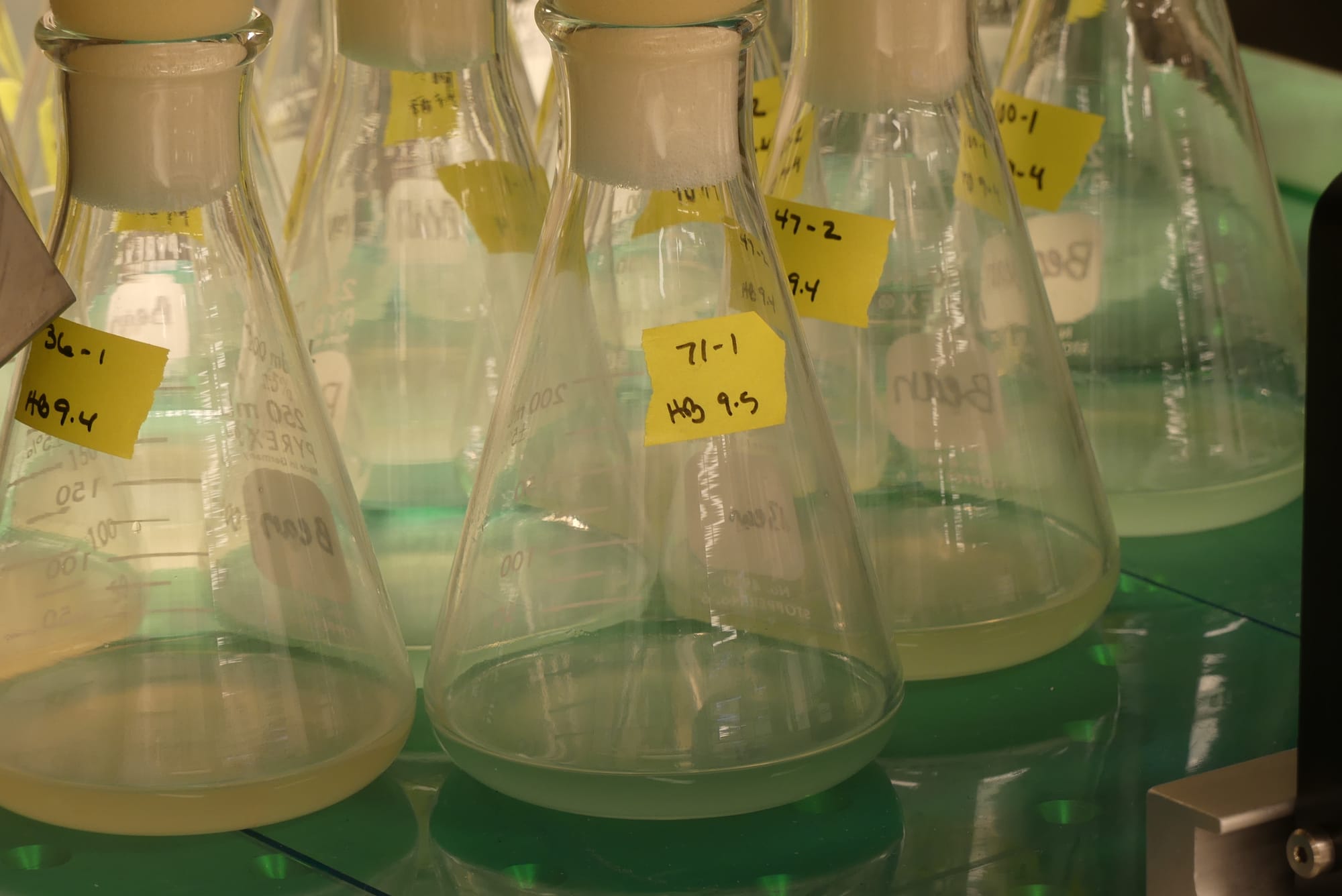Discovering the richness of microbial volatilomes

In 2010, when Bean was a Postdoc with Jane Hill at University of Vermont, she was tasked with figuring out the identities of the bacterial VOCs that Hill's lab was detecting as chemical fingerprints using secondary-electrospray ionization (SESI). Because of a Georgia Tech School of Chemistry seminar by John Dimandja that she saw while in grad school, Bean knew just the analytical tool for the job - comprehensive two-dimensional gas chromatography (GC×GC). In collaboration with Dimandja and Hill, Bean published the first GC×GC analysis of the volatile metabolome of a bacterium, Pseudomonas aeruginosa, uncovering a rich diversity of VOCs that had not been previously described for any microbe. This began her career-changing infatuation with untargeted volatilomics and GC×GC, and the universe of chemical information that this technique can discover.
GC×GC uses two columns of different stationary phases to separate complex volatile mixtures, like microbial culture headspace or human breath, before transferring the analytes to a detector for quantitation and identification. In GC×GC, the effluent from the first column is trapped and re-injected onto the second column in small fractions in real-time, enabling the separation of compounds that co-elute on the first column. This enables the detection of very low abundance compounds that would otherwise be obscured by other compounds (or even by column bleed), resulting in a five to ten-fold increase in the number of compounds you can detect in a single analysis. Using GC×GC we routinely detect many hundreds of VOCs from microbial cultures and several thousand from human breath studies.
With these powerful separation tools we have been building microbial volatile catalogs and answering questions about the size and chemical composition of microbial pan and core volatilomes, the influence of the environment on volatile metabolite production, and the relationships between an organism's genome and its metabolome.
Publications
Emily A. Higgins Keppler, Heather L. Mead, Bridget M. Barker, Heather D. Bean. (2021) Life cycle dominates the volatilome character of dimorphic fungus Coccidioides spp. mSphere. 6, e00040-21. Link
Trenton J. Davis, Ava V. Karanjia, Charity N. Bhebhe, Sarah B. West, Matthew Richardson, Heather D. Bean. (2020) Pseudomonas aeruginosa volatilome characteristics and adaptations in chronic cystic fibrosis lung infections. mSphere. 5, e00843-20. Link
Carrie L. Jenkins, Heather D. Bean. (2020) Influence of media on the differentiation of Staphylococcus spp. by volatile compounds. Journal of Breath Research. 14, 016007. Link
Carrie L. Jenkins, Heather D. Bean. (2020) Dependence of the staphylococcal volatile metabolome composition on microbial nutrition. Metabolites. 10, 347. Link
Heather D. Bean*, Christiaan A. Rees*, Jane E. Hill. (2016) Comparative analysis of the volatile metabolomes of Pseudomonas aeruginosa clinical isolates. Journal of Breath Research. 10, 047102. [*co-first authors] Link
Heather D. Bean, Jean-Marie D. Dimandja, Jane E. Hill. (2012) Bacterial volatile discovery using solid phase microextraction and comprehensive two-dimensional gas chromatography – time-of-flight mass spectrometry. Journal of Chromatography B. 901, 41-46. Link
Presentations
Identifying breath biomarkers for lung infections using two-dimensional gas chromatography
Heather Bean
Biodesign China Symposium, Jan 2022